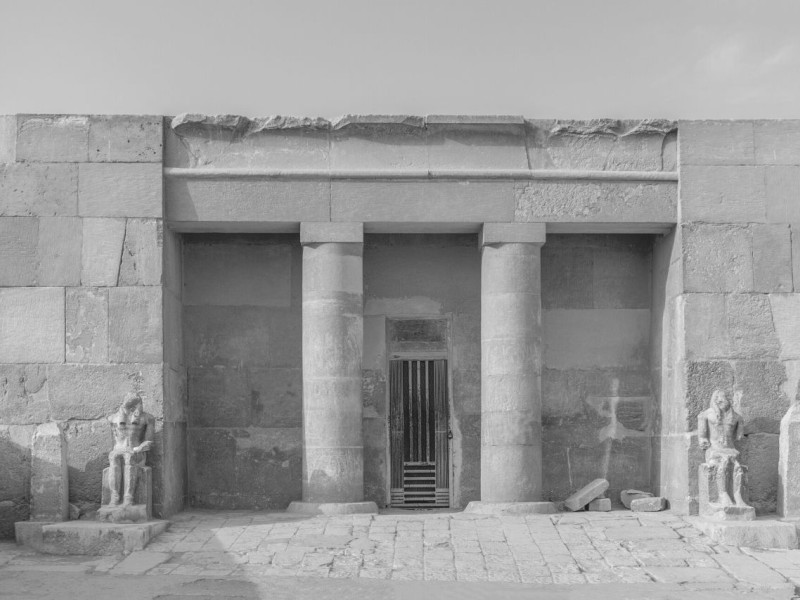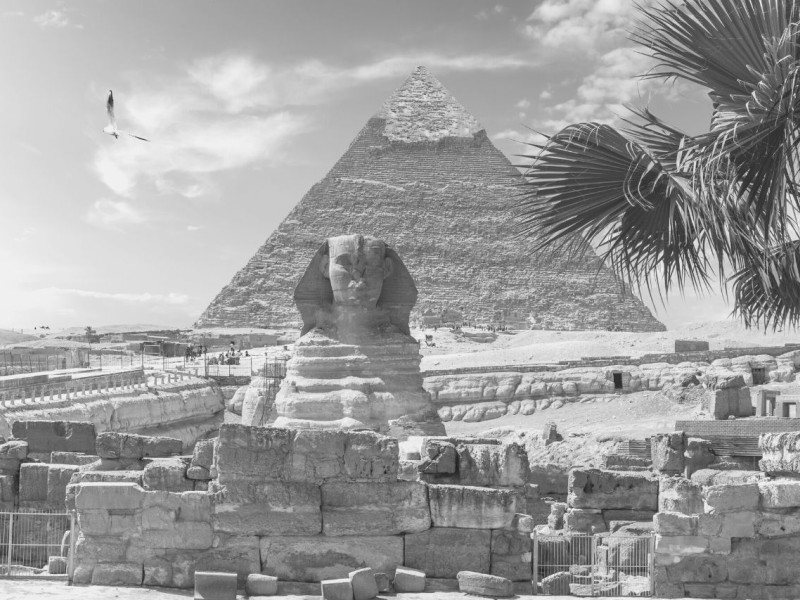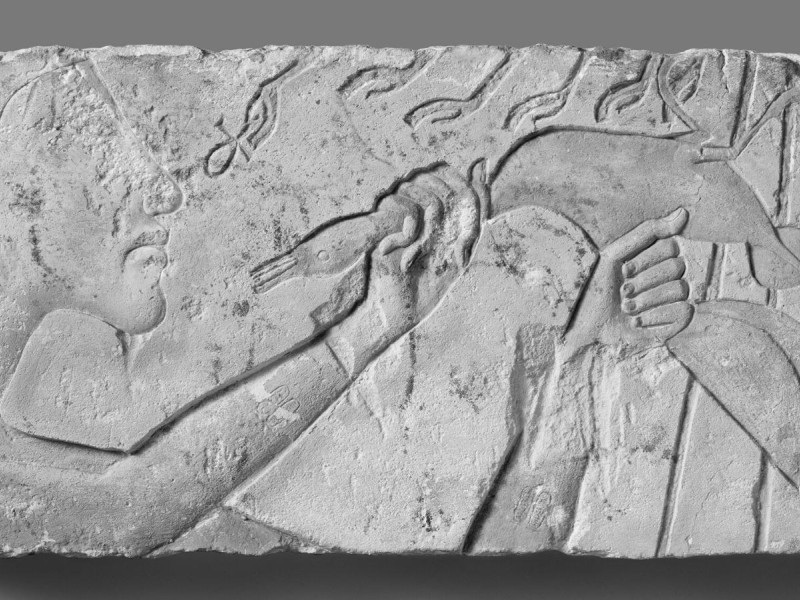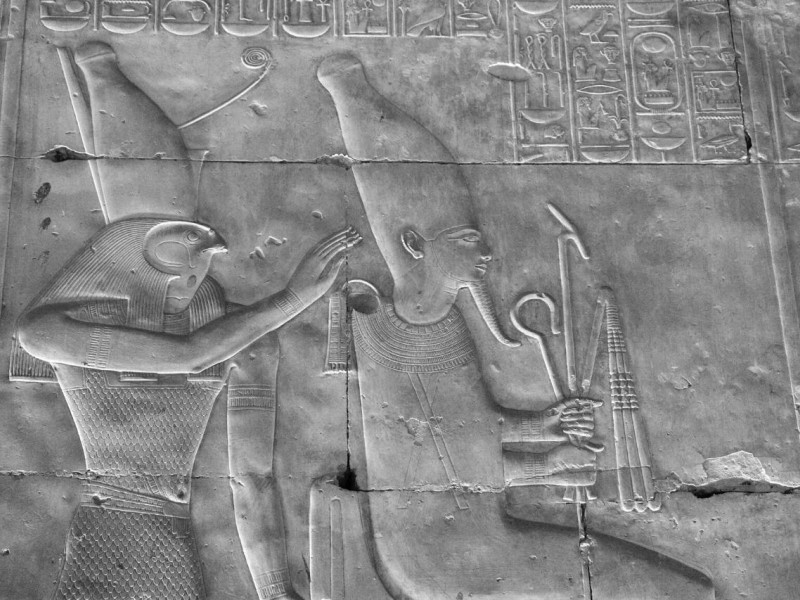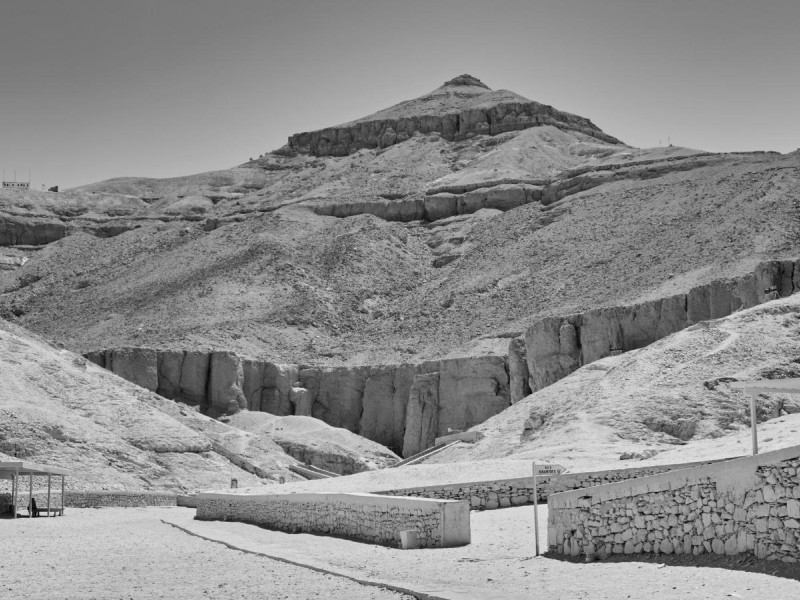Djedefre: Leading Egypt with the Divine Power of Ra
Djedefre, known as the immediate successor to the throne of Khufu, was poised to shape the course of the royal kingdom of Egypt through his enduring power. Much has been written about the history of ancient Egypt, and the life of Djedefre marked another milestone in the lives of the ancient people.
To learn about his achievements and the special connection he had with the god Ra — but, most interestingly, his troubled personal life and his quest for power — keep reading.
Who Was Djedefre?
Djedefre was the eldest son of the great king Khufu, and he was also known as Djedefra or Redjedef. You could remember Khufu as the architect of the Great Pyramid of Giza. However, nothing has been written about his mother, who was believed to come from a nonroyal family.
Djedefre (2528 – 2518 BC), the third king of Egypt during the fourth dynasty, embodied reverence to Ra, the sun god. Thus, his title Sa-Re refers to the Son of Ra, while his name means “enduring like Ra.”
You should know that it was indeed a bold move on his part to proclaim his faith in the god Ra because other people were still worshipping other gods at that time. Other historians contend that he was born when worship to Ra was a remarkable part of the people’s lives, which supported his inclination to the sun god. In other words, Djedefre merely started a tradition that was followed until the fifth dynasty.
The Turin King List reveals that Djedefre ruled for eight years. He got married to Hetepheres II, his sister and the widow of his own brother, Kawab. He also married Khentetenka, who gave birth to his three sons named Setka, Baka and Hornet and two daughters named Hetepheres and Neferhetepes.
The Complicated Family History of Djedefre
Historians believe that Kawab, the brother of Djedefre, was born to Khufu and an Egyptian queen, such that he had a stronger right to the throne than Djedefre, whose mother was unknown.
Therefore, you could inquire about his ascension to the throne as pharaoh of the 4th dynasty. All other pharaohs employed nepotism to acquire the position they wanted. This could give way to their good friends and relatives in power, but this practice produced envy, rivalry, and anger — particularly among the nine sons of Khufu.
And this was the case with Djedefre, too. He moved faster by taking over the position of his brother to win the throne. This was an unacceptable act for the royal family members, but Djedefre showed adamant behavior at the expense of his brother; a decision that ruined the relationships of the royal members of the house of Khufu.
Meanwhile, Hetepheres II married Kawab, Djedefre, and Khafre, who were all her brothers, to further complicate the matter. It may not come as a surprise that, after Djedefre’s ascension to the throne, Khafre plotted against him to seize power. Unfortunately, this did not end well for Djedefre. To know what happened to him, move to the next section.
How Did Djedefre Die?
Now you know how Djedefre rose to power, but you may be wondering how he died. Well, just like Djedefre killed Kawab to seize the throne and marry his wife, he was murdered by his younger brother, Khafre, out of revenge.
Archeologists have discovered important items in the burial complex of Djedefre that were deliberately destroyed, and family members allegedly were pointing at Khafre as the responsible person. They assumed that Khafre wanted revenge against Djedefre, such that he orchestrated his death and the raid of the important religious items in the pyramid.
When Did Djedefre Die?
Given that Djedefre existed in very ancient times, the accurate timeline of his life is difficult to determine, including the length of his reign. The Turin King List lists an eight-year reign for him. Nonetheless, an inscription with Djedefre’s name on the roofing blocks in the boat pit close to the Great Pyramid of Khufu seems to indicate that he was alive in the year of the cattle — which would have been the 11th of his reign..
This evidence was supported by the fact that his pyramid, located at Abu Rawash, was complete at the time of his death. This particular pyramid was quite enormous and should have required more than eight years to build. Given this scenario, you could probably estimate that his reign could have been longer than eight years, and more close to a full decade.
The Cult of Djedefre
Recent research has revealed that Djedefre created a cult, and that people continued worshipping him even after his death. People were asking why he built his pyramid at Abu Rawash, but further archeological diggings had proven his religious inclinations, including a number of votive elements.
You could probably conclude that he used the title “son of Re” for his religious adorations. His name was inscribed in different materials to prove his royal name, power, and influence. There are also reports that Djedefre wanted to be buried close to Heliopolis, the city designated for the cult center of Ra.
Some accounts have indicated that Pharaoh Djedefre could have been the father of Nykau-Radjedef and that both of them were buried near his pyramid at Abu Rawash. Apparently, Djedefre also tried to move the seat of his power there because it was the center of his cult.
After his reign, Menhe, his younger brother, also decided to build a pyramid at Abu Rawash. Djedefre did not think of his burial alone. He also exerted all effort to complete the pyramid of Khufu, his father. To do this, he commissioned his nephew, Menkaure.
The Pyramid of Djedefre
Considering his great devotion to Ra, people believed that Djedefre had acquired a solar power coming directly from the sun god. They even claimed that there was solar power emanating from the pyramid of Djedefre.
In addition to his statue in his pyramid, archeologists also found the statue of Hetepheres II, his wife. This statue was created in the form of a sphinx, and the people devoted much time to the construction of this first sphinx in Egypt. You might conclude that he also pioneered the creation of the giant Sphinx of Giza in honor of his favorite god, Ra, as French Egyptologist Vassil Dobrev has claimed.
Located in Zawiet el-Aryan is another pyramid that resembles the pyramid in Giza. Archeologists found the name of Djedefre on a plaque made of rock. The meaning of this discovery is still the object of speculation, but it would appear that also this pyramid was commissioned by King Djedefre.
The Burial Temple of Djedefre
Djedefre’s reverence for Ra ushered him to build his burial temple at Abu Rawash, a necropolis located in the western part of the Nile. If you drive from Giza, it takes approximately 5 miles heading north. There, you can find a pyramid built on a valley that is 165 yards higher than other valleys around it.
Archeologists only found his pyramid near the end of the 19th century. Naturally, it is now composed of ruins with only a few structures still visible. With the diligence of the archeologists, it was possible to dig the whole pyramid complex, including the broad circling wall.
The pyramid was decorated with a long causeway built from north to south, pointing to an open space for the burial temple. Few remnants of statues tagged with their names were recovered. Parts of the complex included pillars made of stone, fieldstone walls, and a limestone female sphinx.
The pyramid showcases the layout of a temple with a courtyard, complete with many chambers and storerooms with some structural relics. The burial chamber and the corridors were positioned below the ground floor. The slope of the pyramid was sharper than others, but we can only see the original layout in museums because it has deteriorated over time. It is assumed that the structure was probably made with an antechamber and a burial room, which are now ruins.
Conclusion
Djedefre was one of the famous members of the family of Khufu and reigned as the third king of the fourth dynasty of Egypt. Because of his devotion to Ra, the sun god, he adopted the title of “Son of Ra,” which embodied all his praises to the sun deity.
He assumed the throne of Egypt after the death of his father by seizing the monarchy from his brother Kawab, marrying Hetepheres II — who was his sister and the widow of his dead brother — and ruling Egypt with his strength for eight or 11 years, depending on the accounts.
His reign ended when he was murdered by his brother Khafre. He was survived by his three sons and the two daughters he had with Khentetenka, his second wife. As a legitimate son of Khufu, he enjoyed prestige being associated with his great father’s name. Suffice to say, his main legacy was his reverence to god Ra and his adoption of the title Son of Ra because this embodied his veneration of the power of the god of the sun.





